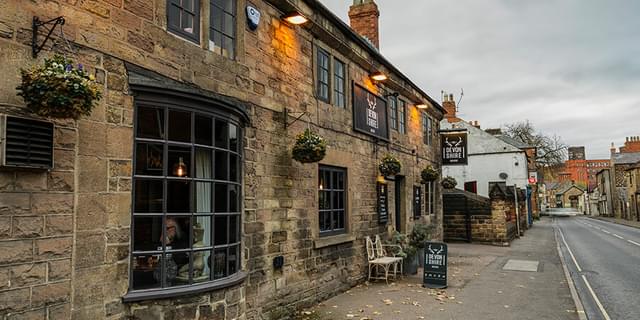
Trails
Belper Heritage Walk
Learn more about this industrial community and how it has changed in the past 200 years.
About
Welcome to Belper, a key community within the Derwent Valley Mills World Heritage Site. It was here that Jedediah Strutt and his sons began their cotton mill business in 1776, and by building and buying homes and facilities for their workers created one of the world’s first industrial communities.
To encourage families to move into Belper and work in their mills, the Strutts built housing for their workers, close to the mills. Nearly all these houses have survived and are still much sought after today. Close by is the mile-long stone-lined railway cutting which has cut through the town since 1838.
The Strutt family were benefactors to Belper and Milford for two centuries, providing for the workers’ needs and there are still many buildings to be seen in the town which were built for the people by the Strutts.
Another great gift to the town was the River Gardens, created and given by George Herbert Strutt in 1906. This water garden by the Derwent still hosts band concerts on alternate Sunday afternoons in the summer. The importance of the Belper mills and their historic industrial neighbours at Cromford, Darley Abbey and Derby was reflected by the World Heritage Site status given to the Derwent Valley Mills in December 2001.
Belper is also within the National Heritage. This leaflet offers a short walk looking at some of the most significant buildings near to the Strutt mills.
The starting point is Strutt’s North Mill.
During your walk you will see the interpretation board on the railway bridge in Long Row, which will tell you more about this industrial community, and show you how it has changed in the past two centuries
Trail directions
Start at the North Mill by the Horseshoe Weir and sluice gates. Take the path by the weir, which runs alongside the river to The River Gardens. This is where willow was grown to make baskets for transportation of good at the mills. George Herbert Strutt agreed to a landing stage being built here. This idea developed into the River Gardens. Band concerts are held here and boats may be taken out on the river.
Across from the Matlock Road entrance to the River Gardens is “The Old Nick” Belper’s former police station, built in 1847 with three police houses built alongside in 1877. Cross at the lights towards these houses and turn right.
On the right, across the road from Long Row is Christ Church and vicarage, built in 1850. Turn left up Long Row.
Turn right into Green Lane. On your left there are four short rows of cottages, these were the first phase of Strutt housing, about 1780.
Turn right into William Street, then at the first lamp post on the left, turn left and pass through the channel or alley into George Street. The more modern George Street houses were built from 1840 onwards and there has been some infilling since then.
Cross the road and through another channel into Joseph Street. The house on the right is a fine example of a cluster house. Turn up Joseph Street and on the left is a Nail Shop, built in the early 19th Century.
At the top of Joseph Street, cross the road into Field Row. On the left is the Unitarian Chapel, built in 1788 and extended on both sides early in the 19th Century.
Back to Green Lane walk back down Joseph Street. At the bottom, walk through the small entry in front of you, and continue down Crown Terrace until you are on Bridge Street.
Turn right, towards the mills. The George and Dragon on the opposite side of the road was a coaching inn and served as an early post office.
Cross at the lights and follow the signs for the North MIll. Strutt mills became part of the English Sewing Cotton Co. in 1897. The big East Mill was built in 1912. In the mill yard the engine house and the remaining stump of the mill chimney can be seen, built in 1854 when the mills began using steam power. Return to Strutt’s North Mill.
Sign up to our newsletter
Receive the latest news, special offers, ideas and inspiration straight to your inbox by signing up to the Visit Peak District & Derbyshire e-newsletter.
